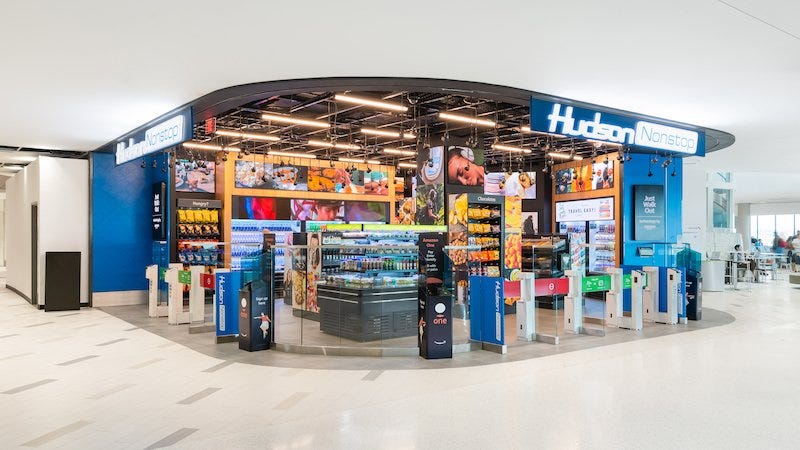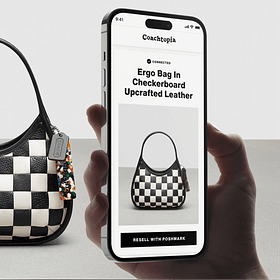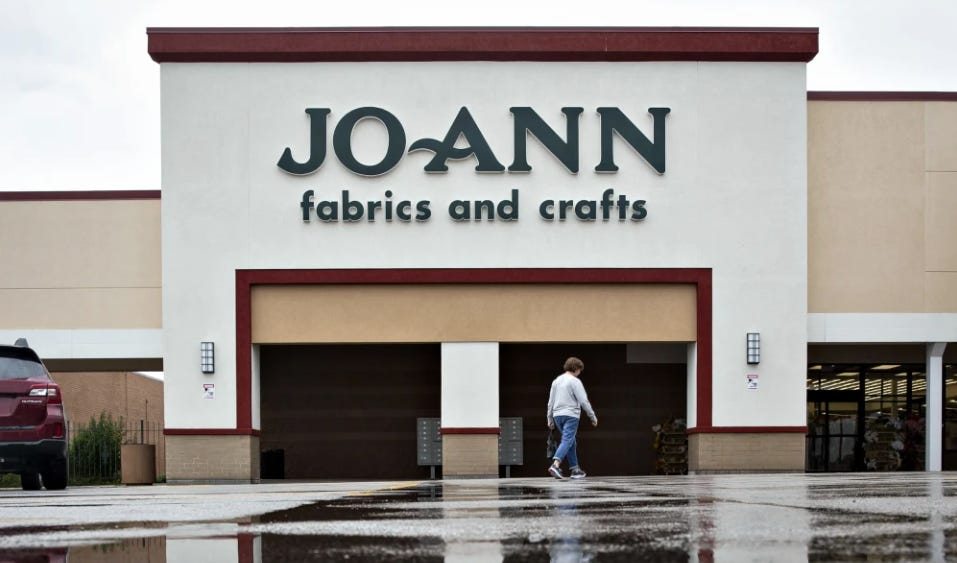This Week in Retail #69
🍀 St. Patty's Day, airport retail, Gen Z going broke, and the end of "Amazonbies"?
St. Patrick’s Day is giving bars, restaurants, and retailers a much-needed boost as consumers embrace the holiday spirit, even as inflation and economic uncertainty keep shoppers cautious. Meanwhile, March Madness is driving a surge in sports betting, merchandise sales, and watch-party essentials, offering retailers new opportunities to capture spending. With spring just around the corner, businesses are hoping this seasonal momentum carries through the rest of the month.
Moat of my professional network is at Promat this week. ProMat is a premier trade show for professionals in material handling, logistics, and supply chain industries, traditionally held biennially in Chicago during odd-numbered years. In even-numbered years, such as 2026, the sister event to ProMat, known as MODEX, takes place. MODEX 2026 is set for April 13–16, 2026, at the Georgia World Congress Center in Atlanta, GA. association. These expos serve as significant platforms for industry professionals to explore the latest innovations, network with peers, and gain insights into emerging trends. The event will feature over 1,000 exhibitors showcasing the latest innovations in automation, robotics, warehouse management, transportation, and fulfillment solutions. Attendees can expect hands-on demonstrations, keynote speakers, and educational seminars covering trends like AI, sustainability, and labor challenges in supply chain management.
Of course, TWIR will be bringing you a recap.
This Week in Retail Therapy
As someone who travels a lot for work, grabbing coffee or food on the go is a nightmare and customer service has no bearing whatsoever on shopper demand so as someone who writes about retail, I generally stay away from the airport dilemma. But what happened to frictionless checkout? I thought Amazon had the silver bullet when it started selling its "Just Walk Out" cashierless checkout technology to other retailers in March 2020. The company initially launched Amazon Go stores in 2018, featuring the technology, but later expanded by licensing it to other businesses, including airport stores, stadiums, and grocery chains. Since then, major retailers like Hudson, Sainsbury’s, WHSmith, and Travel Convenience stores have adopted the system to streamline shopping experiences in places like airports, stadiums, and convenience stores. Well sort of……
But have you seen one in the flesh? Why is there no one there? It is eaither one of two things:
It is the most effective technology in the world that cycles through shoppers
This is not my take
There is absolutely no audience or desire for adoption
I get some barriers here: Privacy concerns are a major factor, as the system relies on extensive camera surveillance and AI tracking to monitor their every move, raising fears about how personal data is collected and used. Technical glitches and errors can also create frustration if a purchase isn’t correctly registered, leading to unexpected charges or missing items. Some shoppers simply prefer the human interaction of traditional checkout lanes, especially when needing assistance or dealing with complex transactions like price adjustments or age-restricted items. Additionally, lack of trust in automation may make some consumers uncomfortable with not receiving an immediate receipt or confirmation of their purchases. Lastly, the fear of accidental theft—walking out and later realizing an item wasn’t charged properly—can make customers uneasy about using the technology.
But then I see Starbucks - and when I observe hundreds of people lining up to scan their mobile app, to me there is a disconnect. For those that don’t know - entry to a JWO location is fairly simple. You either scan your mobile barcode, or insert your Credit Card - something you’re doing any way.
The point of this ramble is this…..Technology alone isn’t enough to drive successful adoption—it requires change management and coaching to ensure people understand, accept, and effectively use it. Change often brings uncertainty, and without clear communication and leadership support, users may revert to old habits instead of embracing innovation. Additionally, if organizations fail to address cultural and workflow shifts, the technology may not integrate smoothly into daily operations, reducing efficiency instead of improving it. Ultimately, technology is only as effective as the people using it, and without structured change management, even the most advanced solutions can fail.
Happy Friends,
Hudson’s Bay Co., the historic Canadian department store, has filed for bankruptcy protection due to financial struggles, claiming financial situation was exacerbated by U.S. tariffs and a challenging post-pandemic retail environment. The company, which operates Hudson’s Bay, Saks Fifth Avenue, and Saks Off 5th stores in Canada, faces an “urgent liquidity crisis” and is unable to pay suppliers or fund payroll.
A court approved CA$16 million ($11 million) in emergency financing, but the retailer plans to liquidate some stores and restructure around a core number of locations. Hudson’s Bay’s Canadian Saks Fifth Avenue and Saks Off 5th stores will continue operating.
The company had attempted to refinance debt earlier this year but failed to secure lenders. For the fiscal year ending Jan. 31, it reported a net loss of CA$329.7 million and negative EBITDA of CA$67.9 million. Analysts have criticized HBC’s 2021 decision to split its online and offline operations, which was later reversed.
The filing does not impact Saks Global, the entity HBC formed after acquiring Neiman Marcus and Bergdorf Goodman in December for $2.7 billion—a deal that diverted cash and contributed to HBC’s financial woes.
I wrote about Amazon’s brick-and-mortar strategy last week…….
But in case you missed it, Amazon is merging the corporate teams behind its Amazon Go convenience stores and Amazon Fresh grocery business as part of an internal restructuring. The move comes as Amazon Go has struggled to expand while Amazon Fresh has been growing its store count. The merger resulted in a small number of layoffs, though Amazon did not specify how many roles were eliminated. Affected U.S. employees will receive pay and benefits for at least 60 days, along with severance and job search support.
Amazon has faced challenges in its physical retail division, with Amazon Go shrinking from 30 stores in early 2023 to about 15 today. Meanwhile, Amazon Fresh surpassed 60 stores last year but had to pause new openings in 2023 due to economic difficulties. Despite these setbacks, Amazon says it remains committed to its grocery and convenience store business. The restructuring follows CEO Andy Jassy’s broader efficiency push and comes shortly after Whole Foods CEO Jason Buechel was appointed head of Amazon’s Worldwide Grocery Stores division, though Amazon says the changes are unrelated to his promotion.
It may be time to throw those old gift cards in your wallet away…..Joann is no longer accepting its own gift cards as it prepares to close all locations. The craft retailer, which filed for bankruptcy in January, initially planned to close over 500 stores but later announced all locations would shut down after GA Group acquired most of its assets. The policy took effect on Feb. 28, shortly after the Feb. 25 announcement of the full closure. While state laws vary on gift card expiration, their use during liquidation is determined by a bankruptcy court.
The UK’s Financial Conduct Authority (FCA) is seeking public input on a proposal to remove the £100 ($129) limit on contactless card payments. The regulator released an engagement paper on March 14 outlining potential changes and will accept comments until May 9.
The FCA is considering whether removing the limit would enhance consumer choice, business flexibility, and payment innovation while maintaining fraud protections. This move is part of a broader effort to support economic growth in the UK. The proposal aligns with the government’s "Plan for Change" and follows the FCA’s earlier recommendation to Prime Minister Keir Starmer.
The review comes as Starmer’s administration works to streamline financial regulation, including plans to merge the UK’s Payment Systems Regulator (PSR) into the FCA.
A proposed bill in Washington state, House Bill 1739, could impose fines on Walmart and other grocery stores for not meeting specific self-checkout standards.
Key points:
🔹 The bill, introduced by Rep. Mary Fosse, aims to regulate self-checkouts in supermarkets by setting conditions for their use.
🔹 Self-checkouts could only be used when traditional checkout lines are open, employees would need to monitor up to two self-checkout stations, and customers could have no more than 15 items.
🔹 Stores that don’t comply would face civil penalties of up to $100 per day, with a maximum fine of $10,000.
🔹 The bill aims to address issues with automation and understaffing that have impacted grocery workers in the state.
🔹 The proposed regulation would apply to grocery stores over 15,000 square feet, excluding membership-based stores like Costco.
Kohl’s has stopped accepting Amazon returns at select stores as part of a temporary test, signaling a potential shift in its partnership strategy. Kohl’s initially partnered with Amazon in 2019 to boost foot traffic, but it failed to translate into sustained sales growth. The retailer has now seen 12 consecutive quarters of declining same-store sales. Employees have voiced frustration over the workload of processing Amazon returns without seeing corresponding sales benefits. Stores in Leominster, MA; Washington, MO; and Eau Claire, WI are no longer accept Amazon returns, with some directing customers to The UPS Store. Mentions of Amazon have faded from Kohl’s recent earnings calls, suggesting it’s no longer a strategic focus. This test suggests Kohl’s may be reassessing its Amazon partnership as it explores other retail collaborations like Sephora and Babies R Us.
Donatella Versace, 69, is stepping down as chief creative officer of Versace after nearly 30 years, transitioning to a new role as chief brand ambassador on April 1.
Capri Holdings, Versace’s parent company, announced that Donatella will now lead the brand’s philanthropic and global advocacy efforts. Dario Vitale, former design and image director at Miu Miu, will replace Donatella as chief creative officer, overseeing the brand’s creative direction.
Macy’s is partnering with Good American, the denim brand co-founded by Emma Grede and Khloé Kardashian, to expand its denim offerings. The brand will launch in 36 Macy’s stores this spring and expand to 79 by fall, with products also available online and in the Macy’s app. Good American offers denim and ready-to-wear styles in sizes ranging from 00 to 5XL.
Macy’s Chief Merchandising Officer Nata Dvir highlighted the brand’s commitment to inclusivity and innovation in denim. For Good American, the partnership is a key milestone in its growth strategy, allowing it to reach more customers in-store.
Since its 2016 launch, Good American has rapidly expanded through retail partnerships, including a 2022 collaboration with H&M. Macy’s, meanwhile, has been revamping its product lineup with private-label brands like State of Day (loungewear), Epic Threads (kids apparel), and Mode of One (menswear).
Financially, Macy’s reported a 4.3% decline in Q4 net sales to $7.8 billion, though net income surged to $342 million from a $128 million net loss last year.
A lot of AI talk in retail this week with AI integration efforts announced by Google and Target……Google Shopping has launched new AI-powered tools to enhance the fashion and beauty shopping experience. U.S. mobile users can now describe an item using the vision match tool, which generates an AI image and links to similar products. The platform has also expanded its virtual try-on feature to include pants and skirts, allowing shoppers to see garments on diverse models and even create full outfit looks.
Additionally, Google introduced an AR beauty tool that lets customers virtually try on multiple beauty products inspired by celebrities and trends. These updates build on Google Shopping’s AI-driven transformation, which began last October with an AI-enhanced platform offering personalized product curation, custom deal pages, and in-store shopping insights via Google Lens.
This AI innovation aligns with a broader retail trend, as seen with Wayfair’s recent launch of "Muse," a generative AI tool that curates shoppable search suggestions from AI-generated images.
Target is integrating AI and social media trends into its product discovery process to engage consumers more effectively. When its AI tools detected the rise of the "mob wife" leopard-print trend on TikTok, Target swiftly collaborated with vendors to stock relevant products online within days and in stores within weeks.
By shortening its go-to-market cycle from seven months to eight weeks, Target is adapting faster to trends. The retailer is also leveraging generative AI to summarize customer reviews, enhance product pages, and develop AI-powered shopping tools like a holiday gift finder.
To stay on the digitization track for a moment…….Ulta Beauty is focusing on digital acceleration, personalization, and a new marketplace to drive growth, CEO Kecia Steelman said during the company’s March 13 earnings call. Steelman, who took over as CEO in January, acknowledged that Ulta lost market share in beauty for the first time in 2024 amid rising consumer expectations and intense competition.
To stay competitive, Ulta plans to enhance its digital experience with new app and website features, increase automation for personalized customer engagement, and launch a curated online marketplace in late 2025. The marketplace will be invitation-only for brands, allowing customers to earn points and return purchases in stores.
The company has also restructured leadership, adding chief retail officer and chief technology and transformation officer roles. Despite a slowdown in the beauty category, Steelman remains optimistic about continued consumer demand.
As part of a multiyear strategy to grow sales by $15 billion by 2030, Target plans to revamp merchandise in key categories, open 20 stores, and remodel many more. Despite a slight decline in Q4 net sales, the company remains focused on innovation but expects consumer and tariff uncertainties to impact Q1 profits.
Dollar General is focusing on improving its in-store experience as inflation pressures consumers. The retailer is closing 96 stores, mostly in urban areas, and reducing its Popshelf footprint by 22% to 180 locations. Despite closures, Dollar General remains optimistic about Popshelf, aiming to boost sales through brand partnerships and insights to refine nonconsumable offerings.
While analysts support store reductions, some suggest more aggressive action is needed due to declining new store returns. The company, which had 20,594 locations as of January, still plans to open 800 stores, remodel 1,500, and relocate 85 this year.
To enhance operations, Dollar General is streamlining inventory, refining distribution processes, and rolling out a new point-of-sale system. However, challenges remain, including customer dissatisfaction with cluttered aisles and staffing shortages. The retailer is also losing some middle- and higher-income rural shoppers to Amazon’s expanding same- and next-day delivery services.
In response, Dollar General is partnering with DoorDash for delivery from 16,000+ stores and piloting same-day home delivery in 400 locations, with plans to expand to 10,000 by year-end. Early results show higher average order values compared to in-store purchases. The company expects 2024 net sales growth of 3.4%-4.4% and same-store sales growth of 1.2%-2.2%.
And to finish with something that I find haunting…..Gen Z has experienced the sharpest rise in living paycheck to paycheck over the past two years, with the share jumping from 57% in January 2023 to 69% in January 2025—surpassing the overall U.S. population, which rose from 60% to 66% in the same period.
🔹 While some Gen Z consumers face financial strain due to economic pressures, PYMNTS research suggests that many live paycheck to paycheck by choice.
🔹 About 25% of Americans do so voluntarily, often citing family obligations, debt payments, or discretionary spending. Gen Z, in particular, is the most likely generation to cite splurging on nonessentials as a financial stressor, with 34% attributing it to their financial situation and 19% naming it as the primary cause.
🔹 Despite their high discretionary spending, Gen Z saves a slightly higher portion of their income (9.8%) compared to other age groups. As businesses target this generation as future workers, customers, and investors, their growing economic influence is crucial—by 2030, Gen Z will make up a third of the workforce and see a sevenfold increase in disposable income.
That’s all folks….Have a great week






